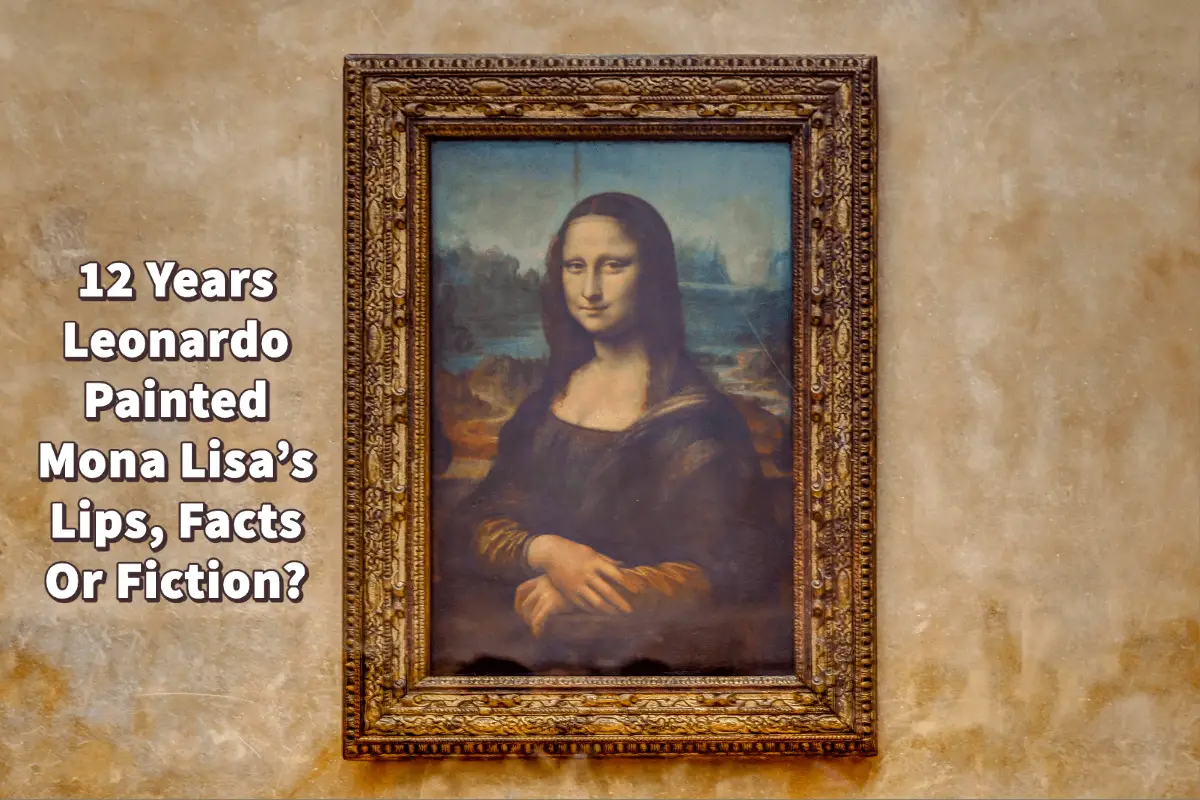The Mona Lisa painting is one of the most viewed and recognizable paintings globally. But like any great painting, many facts and fiction surround the painting.
No evidence shows Leonardo da Vinci spent 12 years painting the Mona Lisa smile. Most scholars believe that he painted the painting in 4 years but then had the painting much longer in his possession. He could have worked on it a bit or adjusted it when he had it in his possession, but there is no evidence to show that.
Table of Contents
- Took 12 Years For Leonardo da Vinci to Paint Mona Lisa’s Lips
- Mona Lisa Was Once Stolen Out Of The Louvre
- Peruggia’s Theft Of The Mona Lisa Was Motivated Out Of Patriotism
- Napoleon Bonaparte Once Had The Mona Lisa Hanging In His Bedroom
- The Mona Lisa Is Copyrighted
- Frequently Asked Questions
- Related Questions
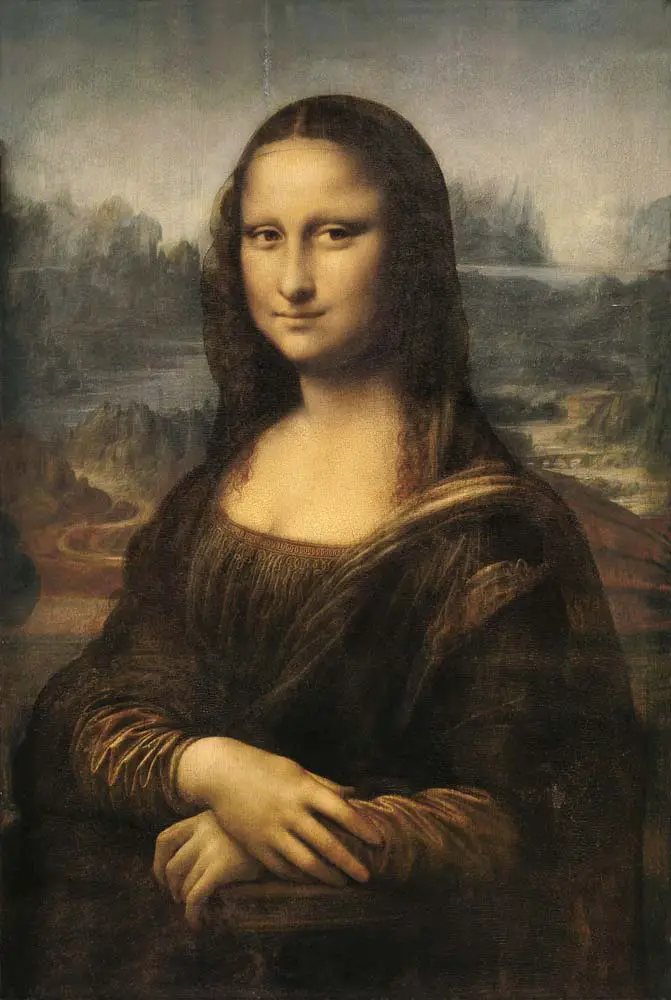
Besides the rumor that Leonardo da Vinci took 12 years to paint the Mona Lisa smile, many facts and fiction surround the Mona Lisa. Here are some of our favorites.
Took 12 Years For Leonardo da Vinci to Paint Mona Lisa’s Lips
This Is Fiction (it did not take him 12 years)
It took Leonardo da Vinci four years to paint the Mona Lisa, but he kept it in his possession for a while longer. Leonardo started the painting in 1503 when he was 50 years old.
The painting remained in his possession for a long time. The rumor that it took him 12 years to paint the smile started partly because it is such a unique smile. But we have no concrete evidence to show that he continuously worked on it for all those years.
In fact, from what we know, he is said to have finished it in 1507, and some say that he was still working on it when he emigrated to France in 1516. But most scholars say he only worked on it another three years, so the total he would have worked on the painting, including the smile, would have been seven years.
I feel like Leonardo had a great love for the Mona Lisa painting, and so he wanted to keep it in his possession. Maybe he knew the women in the painting.
No evidence shows that Leonardo spent over 12 years painting the Mona Lisa smile. I feel he was too good an artist to spend so many years on just a smile.
Mona Lisa Was Once Stolen Out Of The Louvre
This Is Fact (Mona Lisa Was Once Stolen)
Today, when you visit the Louvre Museum, the Mona Lisa painting by Leonardo da Vinci is one of the most guarded paintings in the world. But at one point, the painting was stolen out of the Louvre Museum.
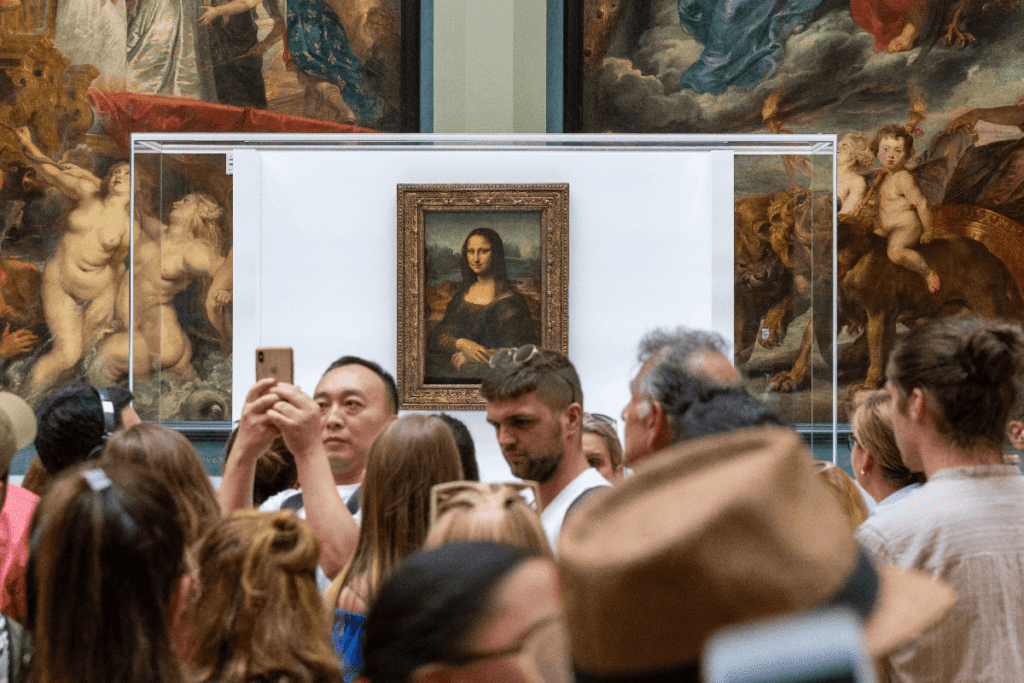
In 1911, Vincenzo Peruggia instituted what was known as one of the greatest art heists of the 20th Century; his stealing of the Mona Lisa painting is what movies are made of.
At the time, Peruggia was a former Lourve worker, and police believed he hid in the museum overnight on Sunday, 20 August 1911. Peruggia denied this and instead said he entered the Lourve Museum on Monday, 21 August 1911, at about 7 a.m. with the other Lourve Museum workers.
He was dressed in a white smock that the museum employees wore, so he was not distinguishable from the other workers. When the Salon Carre was empty where the Mona Lisa was hanging, he lifted the painting off the wall and took it to a nearby service staircase.
He removed the protective case and frame that the Mona Lisa was in. He took off his smock, wrapped it around the painting, and walked out the same door he had entered in.
Peruggia kept the Mona Lisa hidden in a trunk in his Paris apartment for two years. Later he brought the painting to Florence, Italy, and kept it in his apartment in Florence.
But eventually, Peruggia became impatient, and he wanted people to know that the famous Mona Lisa had now returned to its original home of Italy. He contacted Mario Fratelli, the owner of an art gallery in Florence, expecting that he would be pleased the painting had come home to Italy; instead, Fratelli contacted the police about the famous stolen painting.
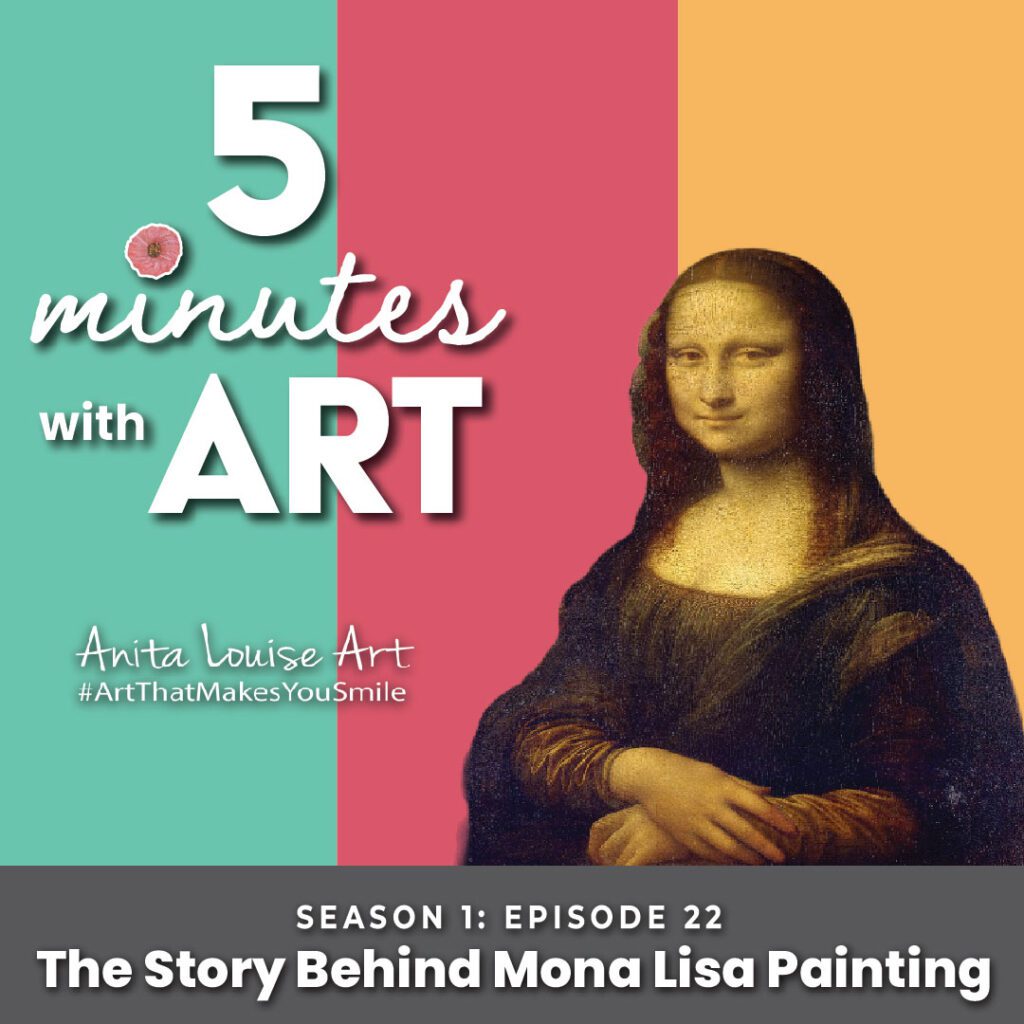
Listen To Our Podcast About The Story Behind Mona Lisa Painting by clicking here.
Once the painting was recovered, it did not go right back to France; it was sent around Italy, and many Italians felt very proud that the famous Mona Lisa had returned home.
Peruggia’s Theft Of The Mona Lisa Was Motivated Out Of Patriotism
This Is Complicated About The Mona Lisa Theft
When Peruggia was put on trial, the court agreed that he committed the crime of stealing the Mona Lisa for Patriotic reasons. They reasoned that Peruggia wanted to return the painting to Italy, where he felt it rightfully belonged.
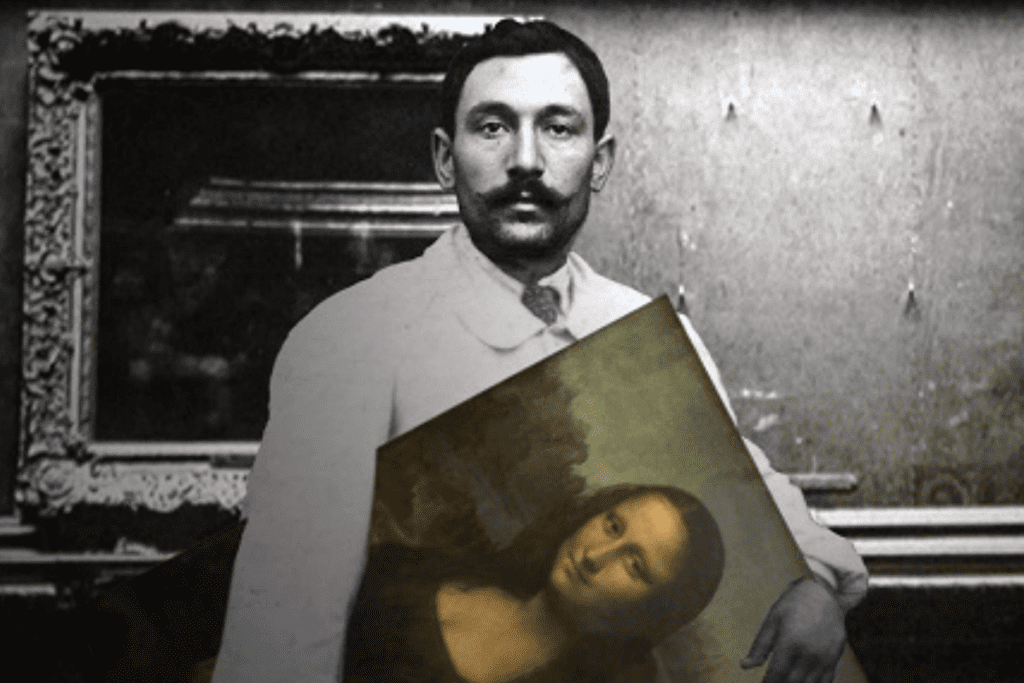
Because the court felt he had committed the act for Patriotism, they gave him a lenient sentence. He was sentenced to stay in jail for one year and 15 days. But as Peruggia was considered a great patriot, he only served seven months in prison.
But many have questioned if Peruggia’s motives were patriotic. On 22 December 1911, only four months after successfully stealing the Mona Lisa, he wrote to his father. Later in 1912, he wrote to his father about his wealth. Peruggia said:
“I will make my fortune and that fortune will arrive in one shot.” (1911). “I am making a vow for you to live long and enjoy the prize that your son is about to realize for you and for all our family.”
Peruggia – Letters To His Father
Many also feel if he stole the Mona Lisa out of Patriotism, he could have donated it to an Italian Museum. Instead, he went to an art dealer, hoping to get some money for it.
Napoleon Bonaparte Once Had The Mona Lisa Hanging In His Bedroom
This Is Fact (The Mona Lisa Was In Napoleon’s Bedroom)
When Napoleon lived at the Tuileries complex adjacent to the Louvre, he would walk the museum’s halls as he moved about the complex. One day in 1800, his eye caught the Mona Lisa painting.

It was said that Napoleon was immediately enamored with the Mona Lisa, and he found her alluring. Perhaps it was her mysterious smile or how she looked at him.
Napoleon ordered that the painting be removed from the Louvre and that she be hung in his private bedroom. Napoleon always spoke very respectfully of the Mona Lisa painting and called her “Madame Lisa.”
The Mona Lisa painting remained in Napoleon’s private bedroom until 1804.
The Mona Lisa Is Copyrighted
This is Complicated
The copyright on the Mona Lisa should have long expired, but the photos someone may take of the Mona Lisa or photos that the Louvre Museum may have of the Mona Lisa may still be under copyright.
Many museums will work hard to restrict who can make copies of their artwork or photos as they make a lot of good money on books, photographs, and other reproductions. So, when looking at a painting like the Mona Lisa and the copyright issues, it is always best to check.
Anita Louise Art is dedicated to art education, great artists, and inspiring others to find and create their art. We love art that uplifts and inspires. #ArtToMakeYouSmile! #ArtToMakeYouHappy!
If you are interested to see any of my art, you can find out more by clicking here. If you are interested in what inspires me and my paintings, you can discover more by clicking here.
We have a free newsletter and would love you to be part of our community; you can subscribe to the newsletter by clicking here. If you have any questions, I would be happy to talk to you at any time. You can reach me, Anita, by clicking here.
Subscribe to our Anita Louise Art YouTube Channel filled with great videos and information by clicking here.
Join us for our podcast “5 Minutes With Art.” Spend just 5 minutes a week with us to discover and learn about great art and artists. You can find out more about our podcast by clicking here.
Frequently Asked Questions
1. Did Leonardo da Vinci really spend 12 years painting Mona Lisa’s lips?
No, there is no evidence to support the claim that Leonardo da Vinci spent 12 years specifically painting Mona Lisa’s lips. Most scholars believe that he completed the painting in approximately 4 years.
2. Why is there confusion about the time spent on Mona Lisa’s lips?
The confusion may arise from the misconception that Leonardo continuously worked on the painting for 12 years. In reality, he likely completed the main work in 4 years, but may have made adjustments later.
3. How long did it take Leonardo da Vinci to paint the entire Mona Lisa?
Most art historians agree that Leonardo da Vinci painted the Mona Lisa over a period of about 4 years, from 1503 to 1506 or 1506 to 1509, with some suggesting a slightly longer timeline.
4. Were there any periods when Leonardo had possession of the Mona Lisa after its completion?
Yes, after completing the Mona Lisa, Leonardo kept it in his possession. During this time, he might have made minor adjustments or worked on details, but there is no conclusive evidence of a continuous 12-year effort.
5. Did Leonardo da Vinci paint Mona Lisa’s smile separately from the rest of the painting?
There is no evidence to suggest that Leonardo painted Mona Lisa’s smile separately from the rest of the painting. It is more likely that he worked on the entire composition in a cohesive manner.
6. Why is the Mona Lisa so famous for her smile?
The Mona Lisa’s smile has captivated viewers for centuries due to its enigmatic and subtle nature. The slight smile creates an illusion of movement, engaging viewers and contributing to the painting’s mystique.
7. Were there any significant changes made to Mona Lisa’s lips after its completion?
While there is no definitive proof of significant changes, it is possible that Leonardo da Vinci made minor adjustments to various elements, including the lips, during the time he had the painting in his possession.
8. How do art historians determine the timeline of painting completion?
Art historians use a combination of historical documents, artistic techniques, and materials analysis to estimate the timeline of a painting’s completion. For the Mona Lisa, historical records and Leonardo’s own notes provide valuable insights.
9. Are there any other theories about the creation of Mona Lisa’s smile?
Some art enthusiasts and scholars have proposed various theories about the inspiration behind Mona Lisa’s smile, ranging from optical illusions to the use of mirrors. However, these theories often lack substantial evidence.
10. What makes Mona Lisa’s smile so intriguing to art enthusiasts?
Mona Lisa’s smile is intriguing due to its ambiguity and the artist’s ability to convey subtle emotions. Viewers interpret the expression differently, contributing to the enduring fascination with the painting’s central enigma.
Related Questions
What Did Leonardo da Vinci Contribute To The Renaissance?
Leonardo da Vinci made many contributions to the Renaissance in art, science, engineering, medicine, and architecture. He was a keen observer who wrote down a lot of what he discovered in his notebooks. His artistic techniques changed how artists painted and influenced many other Renaissance artists.
By clicking here, you can learn more by reading What Did Leonardo da Vinci Contribute To The Renaissance?.
What Technique Did Leonardo da Vinci Add To The Painter’s Toolbox?
Leonardo da Vinci added the Sfumato technique to the painter’s toolbox. The Sfumato technique is about an artist using a soft transition between the different colors and tones used by the artist. Many artists, including Leonardo, use this technique on the faces they are painting to give them a more realistic feel.
By clicking here, you can learn more by reading What Technique Did Leonardo da Vinci Add To The Painter’s Toolbox?.

